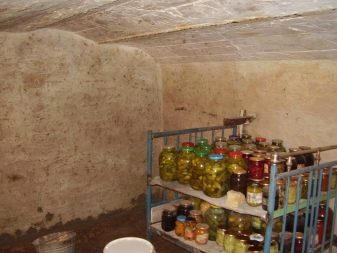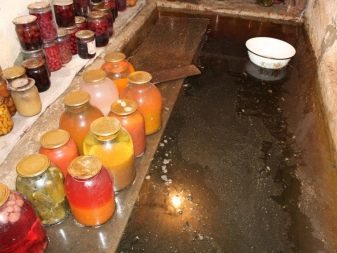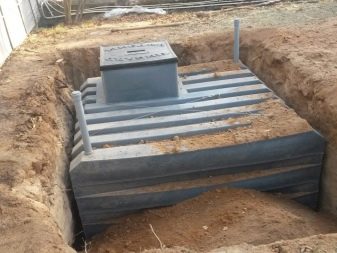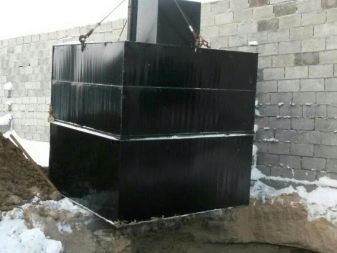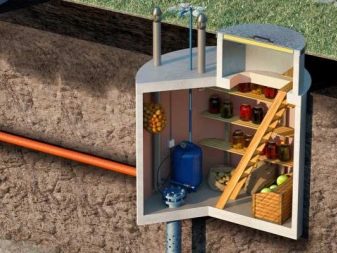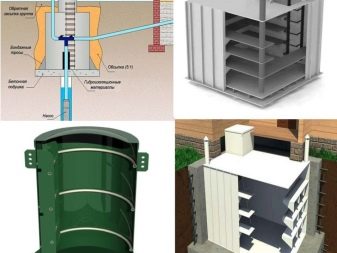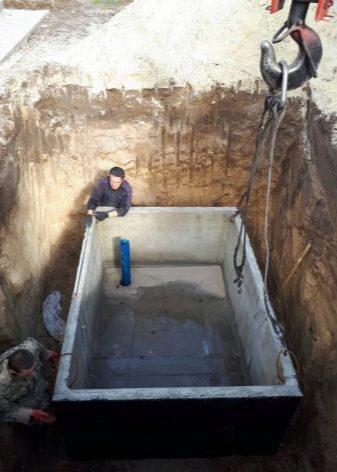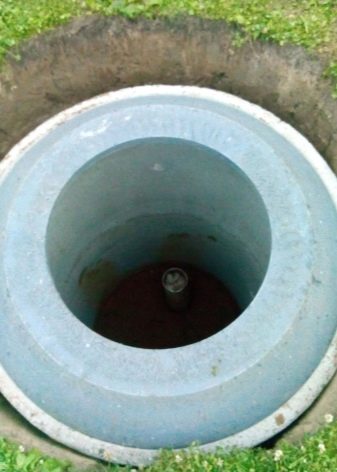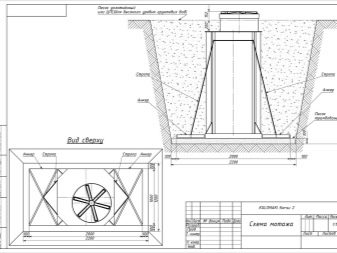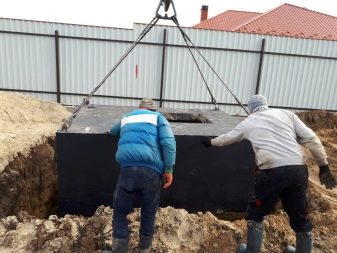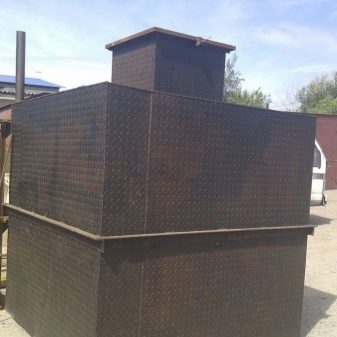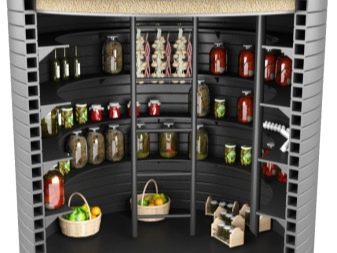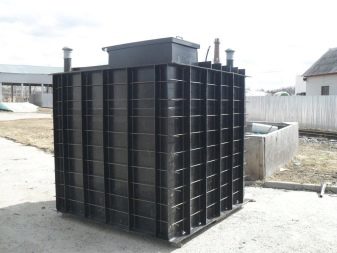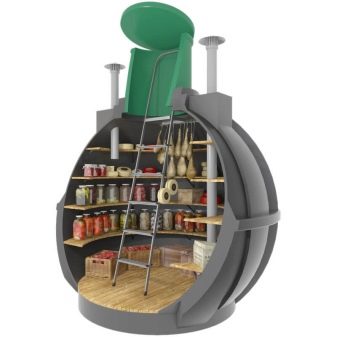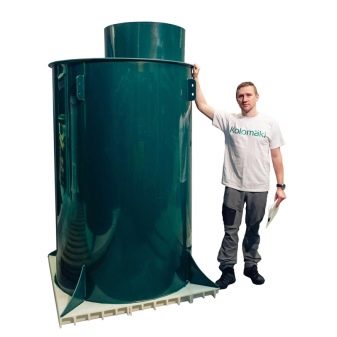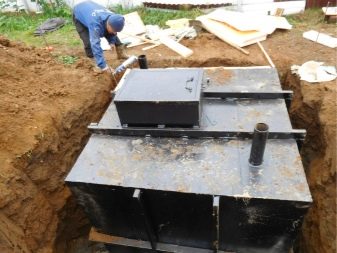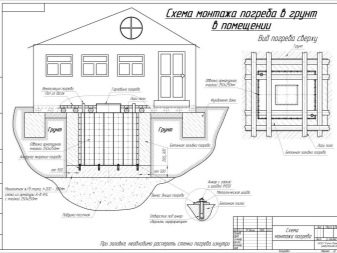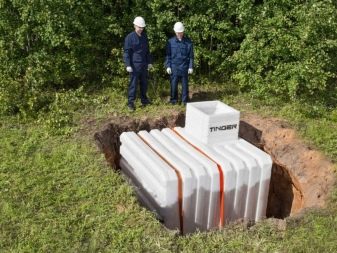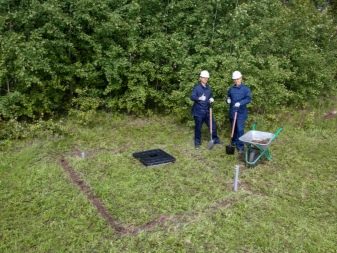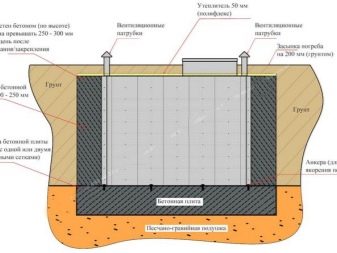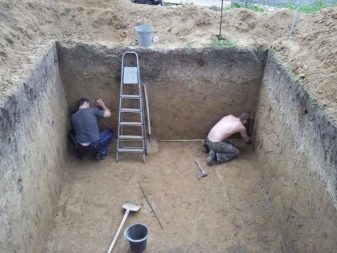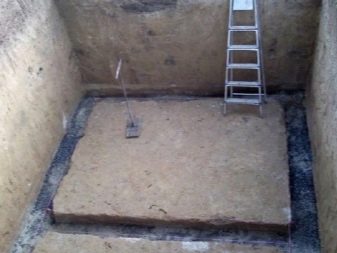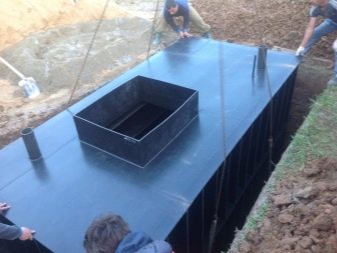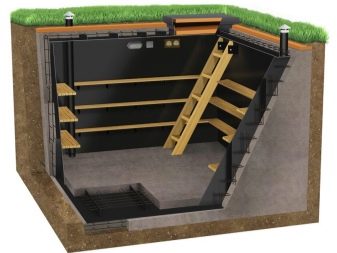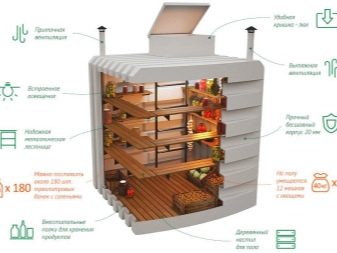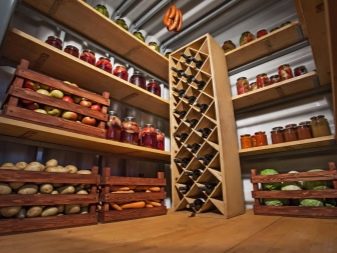Caissons for the cellar: the types and technology of installation
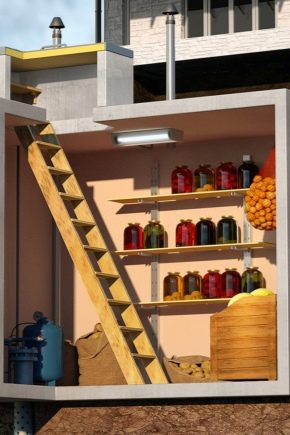
The owners of country houses and gardeners every autumn have an excellent opportunity to reap the fruits of their labors in the form of a rich harvest. But apart from a sense of pride in their success, apart from providing the family with pickles and fresh vitamins, the main problem of all gardeners without exception is added. They are wondering where to store their stocks of fruits and vegetables. For these purposes, a certain climate is needed - a constant temperature, lack of humidity, safety from rodents and insects, mold and fungus.
Until recently, such a storage place served as a cellar under the house or basement.However, this proven method for centuries does not always justify itself, especially if the ground is high groundwater. At the gardeners' forums, almost every season, the topic of flooding the cellar, freezing or, conversely, raising the temperature and humidity, means of fighting fungus and rodents, additional ventilation, insulation, water drainage, rises. People have to decide these vital issues when they see how the crops grown with love begin to mold, rot, or be destroyed by pests.
Special features
The way out was unexpectedly found in the field of shipbuilding. In order for water not to penetrate into the cellar and to maintain a constant temperature there, it must be absolutely hermetic. That is, the caisson for the cellar - this hermetically sealed capsule, which can be completely in the water. Such a cellar can be made of concrete rings, provided that the joints are completely sealed. But modern manufacturers offer an alternative and more profitable option - plastic or metal caissons for the cellar.
In fact, the caisson is an absolutely sealed container with an inlet hatch located on top of the structure. Capacity can vary depending on the needs and wishes of the owner.In form, standard caissons are in the form of a square, parallelepiped or circle. The minimum size is considered to be 1.5 x 2 square meters. m
Caissons produced by production, as a rule, are already equipped with all the necessary elements: a hatchway, a ladder, as well as racks and boxes for storing vegetables are attached to some models.
The walls of the caisson reach 16 mm, this value is considered optimal to withstand the load of the outer layer of soil.
Caissons are equipped with exhaust ventilation that provides air circulation, creates a climate in the capsule and protects against condensation, mold and fungus.
Kinds
The caissons offered by manufacturers differ in the type of material, the internal filling, as a rule, is standard. Caisson can be made independently of reinforced concrete.
The construction of reinforced concrete caisson involves the use of concrete rings, according to the technology of construction of a well or septic tank. This option has a number of significant advantages:
- its weight is so heavy that it eliminates the risk of squeezing the tank outward under the influence of groundwater and heaving soil;
- reinforced concrete rings are able to withstand lateral and bottom loads of soil.
As for the rest, in order to properly equip reinforced concrete storage we will have to face some drawbacks, to spend a lot of effort and finances:
- Concrete structures require high-quality waterproofing, all joints between the rings should be perfectly aligned and sealed. However, even this does not guarantee that the binding material will not be destroyed over time by water or rodents. Hydro and thermal insulation will be required outside the structure.
- To install the concrete storage, you will need a lifting equipment, since even a few people will not be able to lift and lower concrete rings into the pit.
- Under the concrete rings, you need to lay a solid foundation so that the heavy structure does not subside.
Metal caisson are more popular due to the relative light weight, and most importantly, complete tightness of the product. Metal warehouses offered by manufacturers are fully ready for installation. Models are made of solid steel sheets with a minimum width of 20 mm, which significantly improves the quality of the product, and prevents the risk of deformation under the ground. Sheets are welded in a sealed cube, equipped with a ladder and a hatch.
We can say that a metal coffer is a small version of a submarine, which is not afraid of groundwater. The metal is necessarily processed with special anti-corrosion compounds, as well as equipped with a relief valve, in case of water ingress into the sealed compartment.
With sufficient skills in working with metal, you can weld metal sheets yourself. It is important not to forget about the anti-corrosion treatment of the material.
Designs made of plastic have all the advantages of polymeric materials and represent the most modern way of arranging the cellar on the market. Plastic is resistant to moisture, does not need anti-corrosion treatment. The finished products are poured from solid sheets, so there is no need for waterproofing. Polymer models are extraordinarily light in weight compared to their counterparts, their installation will not require the involvement of lifting equipment. Modern plastic caissons are equipped with all the necessary elements in the cellar, and the service life reaches half a century.
Of all the options presented the most popular plastic products.The lightness, economical price and absolute tightness bring this type of caissons to the leaders of sales. Metal caissons are not lagging behind in popularity and have positive feedback from buyers.
Metal models are popular with those summer residents who are not yet ready to entrust storage of the crop with modern plastic structures and wish to equip the place for the cellar thoroughly and as reliably as possible. Reinforced concrete in this race loses in weight and a fairly high price, however, and such structures have their followers.
How to install?
Most products are ready for use immediately after purchase. The only exception is the caisson of concrete rings. As a rule, the manufacturing plant or the sales company offers the installation of its products on a turnkey basis. The buyer only needs to choose a place for the installation, everything else will be completed quickly and efficiently by qualified craftsmen. But if you do not plan to spend additional funds and have certain skills and experience, the installation of the caisson can be done independently.
Installation of the finished product from plastic, metal or concrete is carried out in several stages and has its own nuances.
The most important step in determining all further actions is to determine the place for the caisson.
Location selection
Of course, the most convenient location of the vegetable store will be the cellar under the house or garage at the house. This will allow you to go down behind the supplies without going outside, which is especially important in the winter season. In addition, the arrangement of the caisson under the house will facilitate the installation of the ventilation system.
Install the caisson under the house can only be at the stage of construction of the building, or rather, immediately after laying the foundation.
The best option would be to include a caisson in a construction project in order to foresee all the details and eliminate errors, loss of time and additional expenses. If you are only planning to build a house, then it’s time to think about storing your future harvest.
But in most cases, experienced gardeners think about the storage of supplies when the house has been built for a long time and the harvest is great, thanks to experience and quality care. To build a monolithic caisson made of metal or plastic into the existing cellar will not work, for this you would have to dismantle part of the house. The same applies to the installation of concrete rings.
Therefore, to install the caisson, any convenient place on the site that is suitable for the size of the future structure is chosen. At this point, it will be possible later to build an outbuilding that will allow you to be under the roof when going down to the cellar, and at the same time you will add storage space for agricultural tools.
Preparation of the pit
The easiest way to dig a hole is with an excavator, but a hole that does not exceed 3 meters deep can be dug out with shovels. To do this, cord and pegs mark the boundaries of the future pit. The width of the pit is calculated based on the size of the tank and adding to them another 0.5 meter along the entire perimeter. Additional space will allow for installation work, as well as serve as a place for laying insulation material.
If the groundwater is too close to the surface, then in the process of work not to avoid gradual flooding of the pit. In such cases, in the center of the pit, the catchment basin is arranged - a small hole the size of a shovel bayonet where water will be collected. The hole is deepened as the excavation is dug.
When the foundation pit is ready, a “cushion” for waterproofing is lined to the bottom - a mixture of thick clay that will hold back water. From above the flooring is strewed by sand and is well stamped.Sand and clay will also serve as the lower insulation.
To strengthen the structure and keep it from pushing in heaving soils, an anchor plate is often used. This site can be poured from concrete directly into the pit, using mortar and fittings. In this embodiment, it will take several weeks for the concrete to gain strength. It is easier and faster to use factory reinforced concrete slabs. Caisson to the plate is attached with brackets or steel cables.
As a rule, lugs for fastening are already on the finished products, and when self-pouring the slab, they need to be built into the concrete.
Installation
Before the device is immersed in a hole, it is necessary to take care of the ventilation holes and the places where they will be taken outside. Do not forget that in the case of independent production of ventilation holes, all joints and seams must be hermetically sealed.
For installation of the product will require several assistants, a pair of round logs and a winch. Along the edges of the pit lowering the logs vertically, they will serve as guides and limiter.
With the help of a winch and logs, the product is lowered to the bottom of the pit.It is leveled and regulated by level by swinging the structure. At the next stage, the foundation pit with the installed structure is filled up from all sides with greasy clay and sand. They will serve as excellent heat and waterproofing materials. Each layer laid carefully compacted, until the manhole cover.
The final stage of installation is internal, the most enjoyable work. A ladder is installed, ventilation is regulated, racks and pallets are stored for storing crops and billets.
Tips for arranging and operating
To make the cellar caisson as convenient as possible for storing products, it is equipped with various devices. The number of shelves and drawers, as well as their location can be determined by the manufacturer and be bundled with the product. If the caisson is made by itself or does not include additional equipment, then the necessary elements will need to be made by hand.
- Best dWood can be used to make racks - timber and ordinary polished boards. Wooden crates with straw or sawdust are also a great place to store some vegetables.
- The ladder is most often made of the same wood or metal. The main condition for installing the ladder is its reliability and safety. The deeper the caisson, the more attention should be paid to the strength of the material for the stairs and stability on it during the descent, because falling into the cellar can result in serious injuries. This is especially dangerous if the caisson is outside the home and it will not be possible to immediately get help.
- Another important point in the arrangement of the caisson is lighting. As a rule, standard caissons do not provide for wiring in them, so you can use portable lights or a lantern. But the best option would be to install the lamps on batteries. A rare appearance in the caisson will slightly affect the operation of the batteries and will not soon bring them down.
- If the caisson cellar is outside the home, then after each closing of the hatch it should be covered with insulating material. This may be expanded clay, moss, sawdust or peat. But in order not to complicate the process with natural materials, you can use any synthetic covering cloth or a piece of insulation.
- Cellar-caisson, like any enclosed space, needs periodic airing. It is best to conduct airing in the summer, preparing the storage for the next harvest season. Warm air will dry the room and eliminate the accumulated particles of poisonous gases. At the same time, the cellar is inspected, cracks and defects are detected and eliminated if the caisson is concrete. The functioning of the ventilation is checked and the whole room is cleaned.
For information on how to install a plastic caisson, see the following video.
